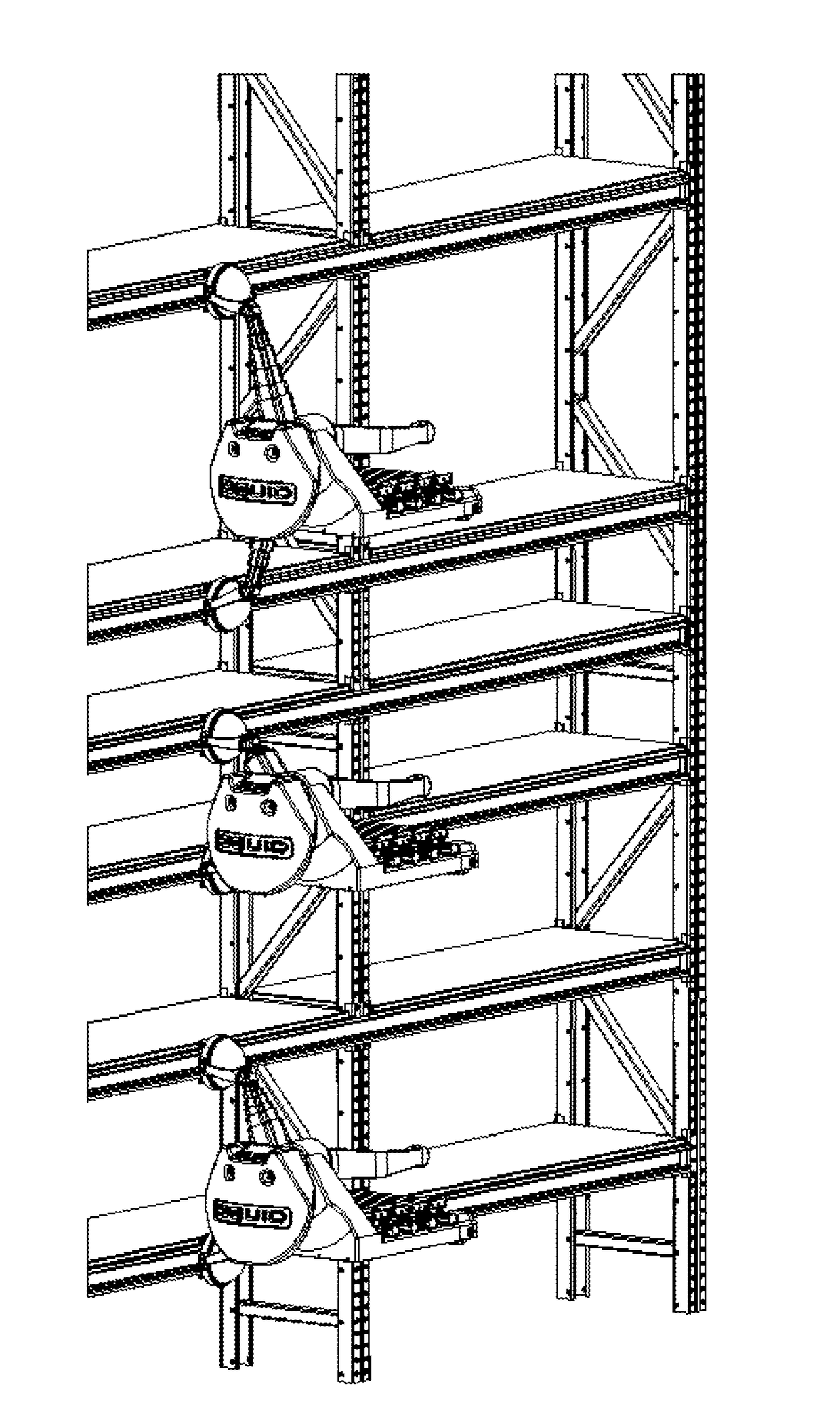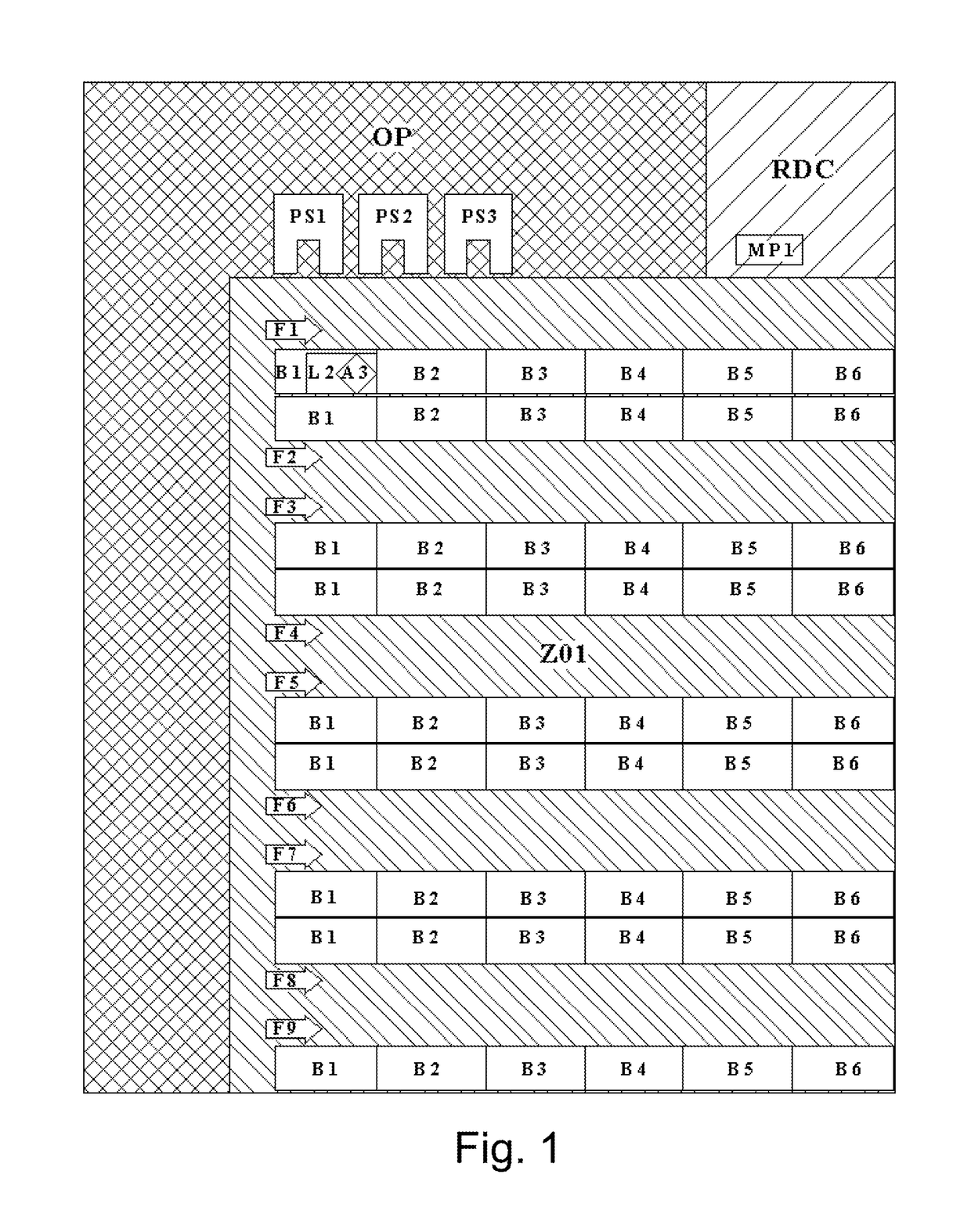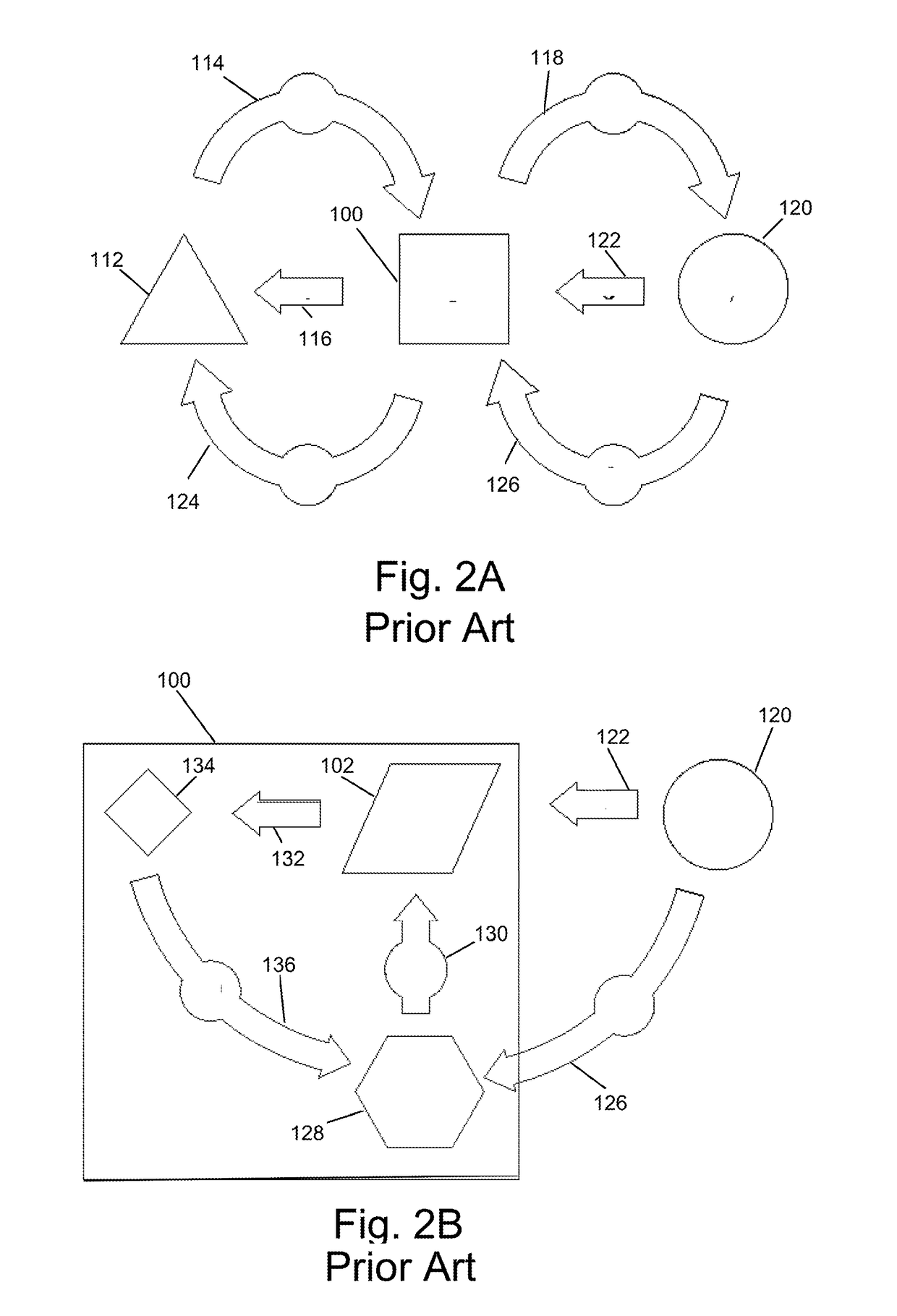Automatic warehouse system
a warehouse and automatic technology, applied in the field of warehouse automation, can solve the problems of increasing the cost of facilities and equipment, and increasing the cost of manual solutions
- Summary
- Abstract
- Description
- Claims
- Application Information
AI Technical Summary
Benefits of technology
Problems solved by technology
Method used
Image
Examples
Embodiment Construction
[0078]The invention is an automatic warehouse solution consisting of multiple multidirectional autonomous robots that are deployed by a central computer and a picking station. The robots of the system have 3 dimensional movement capabilities. Utilizing at least one pair of motorized arms, the robots navigate both along the ground and up and along the shelves to the exact desired location. The system's rails, which allow for the vertical and horizontal movement capabilities of the robots along the shelving, are mounted on or parallel to the vertical supports and shelves of the warehouse.
[0079]Some of the features of the invention that makes the system unlike existing systems are:[0080]The robots in the system of the invention use “anchor point navigation”. That is they use less accurate sensing and motions when travelling on the floor in order to arrive at the designated destination as rapidly and efficiently as possible and employ dedicated algorithms and more precise sensing only w...
PUM
 Login to View More
Login to View More Abstract
Description
Claims
Application Information
 Login to View More
Login to View More - R&D
- Intellectual Property
- Life Sciences
- Materials
- Tech Scout
- Unparalleled Data Quality
- Higher Quality Content
- 60% Fewer Hallucinations
Browse by: Latest US Patents, China's latest patents, Technical Efficacy Thesaurus, Application Domain, Technology Topic, Popular Technical Reports.
© 2025 PatSnap. All rights reserved.Legal|Privacy policy|Modern Slavery Act Transparency Statement|Sitemap|About US| Contact US: help@patsnap.com



